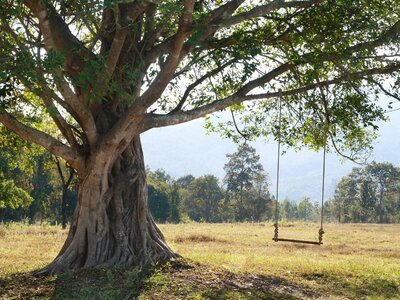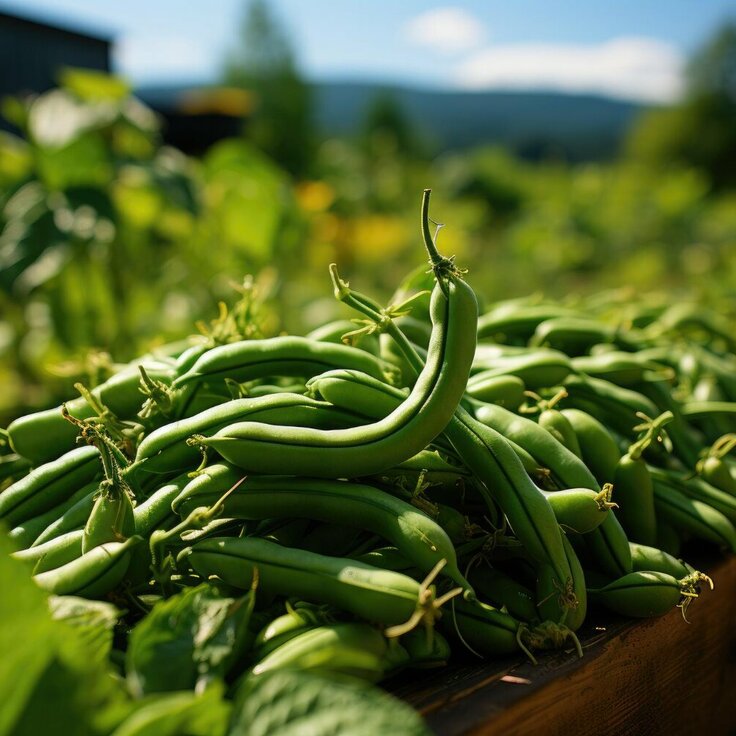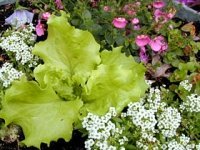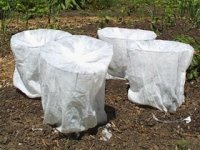Fall & Winter Greens
While you've been enjoying the fruits of your gardening labors this summer -- feasting on tomatoes, peppers, corn, beans, and cucumbers -- don't forget that this is a good time to sow crops for fall and winter. Even if you live in a northern climate, there's still time to sow lettuce, kale, arugula, spinach, and mustard to enjoy right into the holidays. Many of these greens can take a light frost and keep on producing. Plus, if you sow them in September, they'll have plenty of time to grow and mature before the cold and shorter days of November arrive. Then all you have to do is protect them from harsh weather and continue to harvest until winter arrives. With proper protection some of these greens will survive the winter and regrow in early spring.
Here are some great varieties to try and tips on how to grow them.
Fall Varieties
Lettuce is a versatile crop, and there are specific varieties that will grow best during the cool, short days of fall. While any lettuce can be grown in fall, the butterhead types are more cold tolerant than others. Try butterhead varieties such as 'Bibb', 'Buttercrunch', and 'Divina'. If you can't decide on a specific lettuce variety, try growing a mix such as 'Gourmet Salad Blend'.
Spinach and kale are great fall crops because they germinate quickly and like the cool weather. 'Hybrid 7' and 'Melody' are two good fall spinach varieties. These savoy-leaved varieties are disease resistant and vigorous. Kale not only grows quickly but the flavor improves with the cooler temperatures. Some varieties, such as 'Red Russian', are very ornamental as well. Also try growing the blue-green 'Dwarf Blue Curled Scotch' or frilly-edged 'Dwarf Siberian Improved'.
Specialty greens, such as 'Southern Giant Curled' mustard and arugula, add a spicy flavor to your fall salads. The taste of these peppery-flavored greens gets milder as the weather cools, making them good additions to salads of lettuce and spinach. Another good selection of specialty greens is the 'Mesclun Mix'.
Growing Greens in Fall
To get your greens off and running, it's best to plant them as soon as possible in fall. Successive plantings, sown weekly, insure you'll have a crop ready to pick and one coming on at the same time. In the south you can even plant into October.
Amend the soil with a 1- to 2-inch-thick layer of compost before planting. Loosen the soil, create raised beds, and broadcast seed on the surface. Cover the seeds lightly with soil, sand, or potting soil and keep the bed moist. If the weather is still hot in your area when sowing, cover the bed with a shade cloth or floating row cover to keep the soil cool and preserve the moisture. Many crops, such as spinach, don't germinate well in hot soil.
Once the seed germinates, fertilize lightly with a soluble product such as fish emulsion. Greens sown in fall grow slower than those in spring because of the shorter days and reduced light levels. They also require less water and fertilizer.
Protecting Greens
Even though many of the greens can take a light frost, it's best to protect them from cold night temperatures. Place grow tunnels made of plastic or a spun-bound polyester fabric over the crops, or protect small patches with cloches or hotkaps. Growing greens in a cold frame is another way to prolong the harvest. Remember to ventilate the cold frame during warm days of fall or the plants may fry.
Harvesting
As soon as the leaves are large enough to pick, you can start eating. Harvest the large, lower leaves of the greens first. Hand pick the best leaves and let the young, top leaves continue to grow. Pick in the morning after the leaves have thawed from any night freezes.
Read more here at The National Gardening Association








